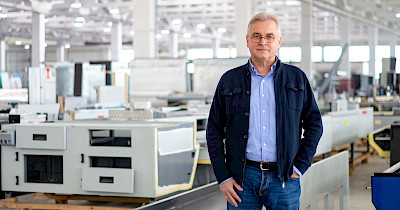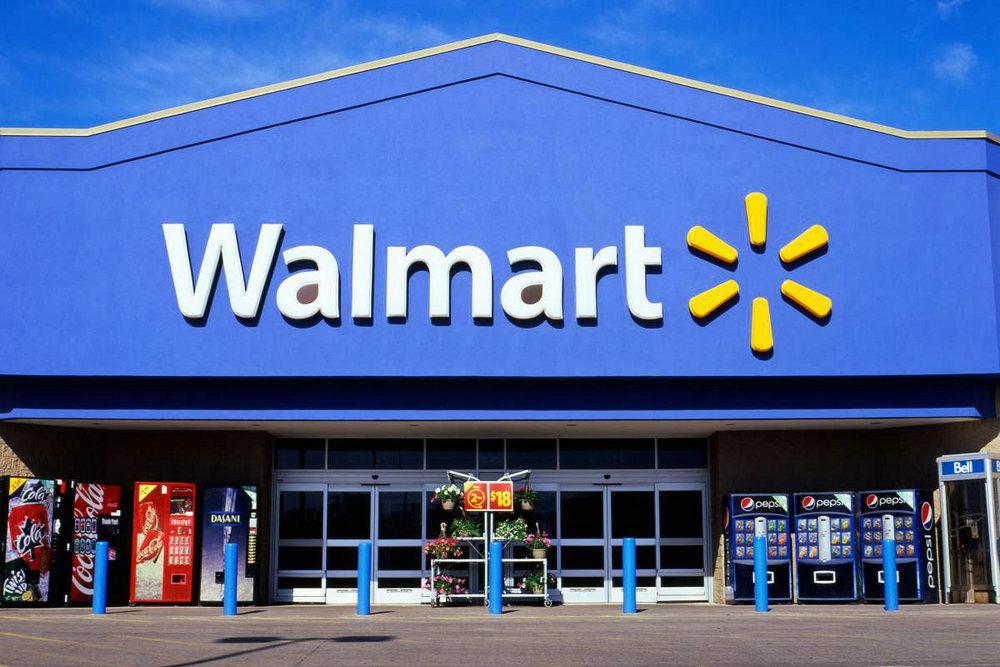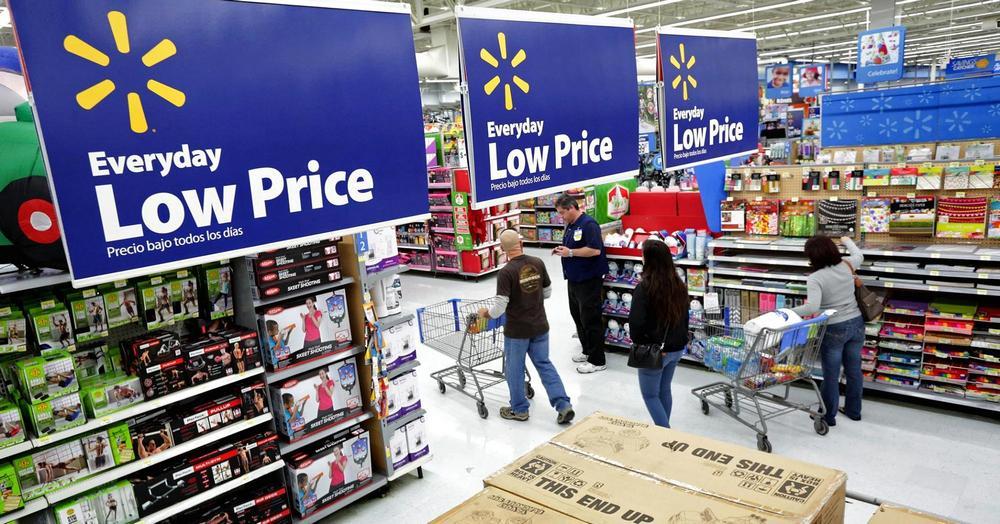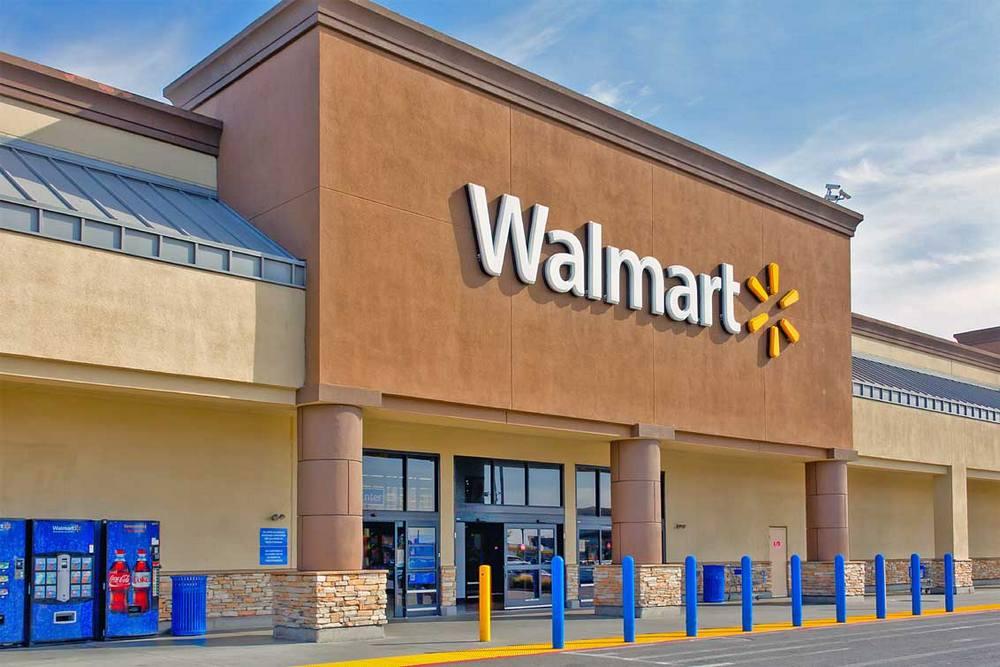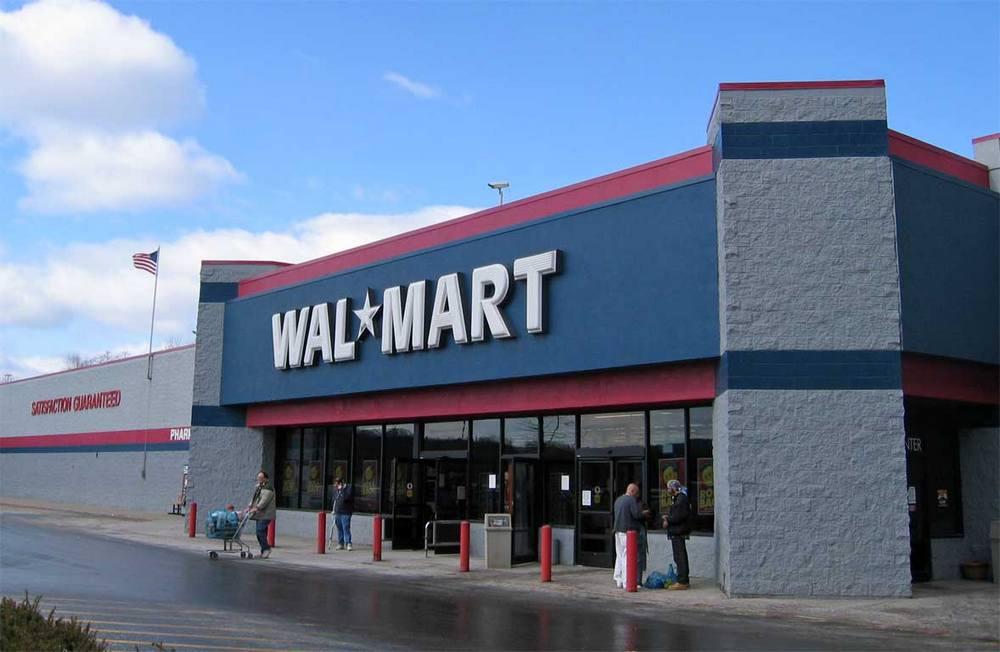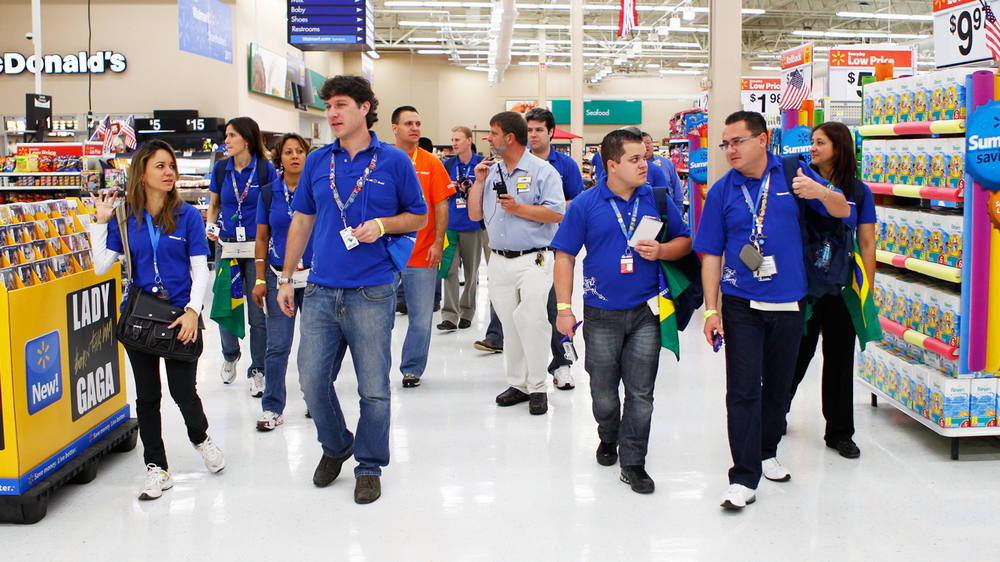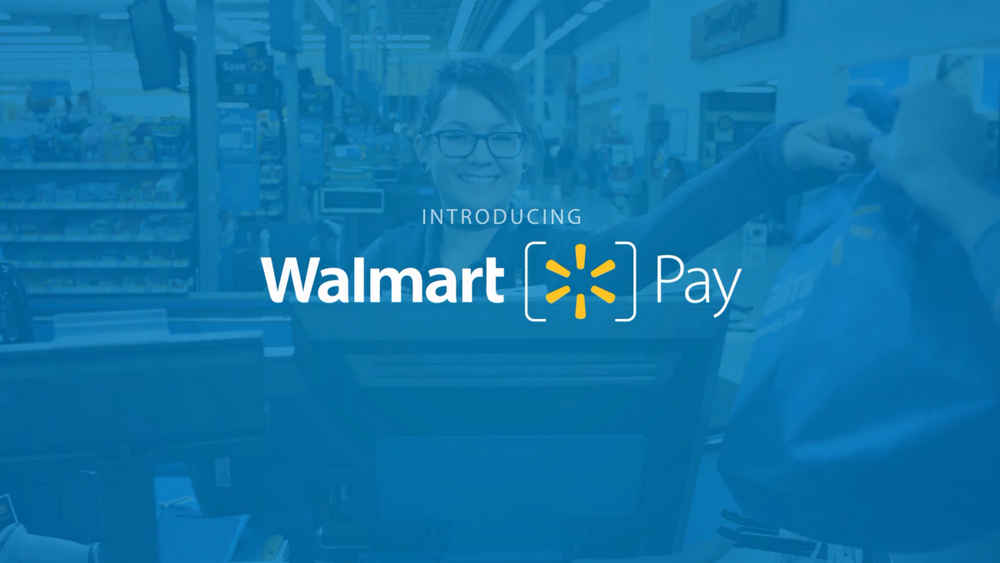
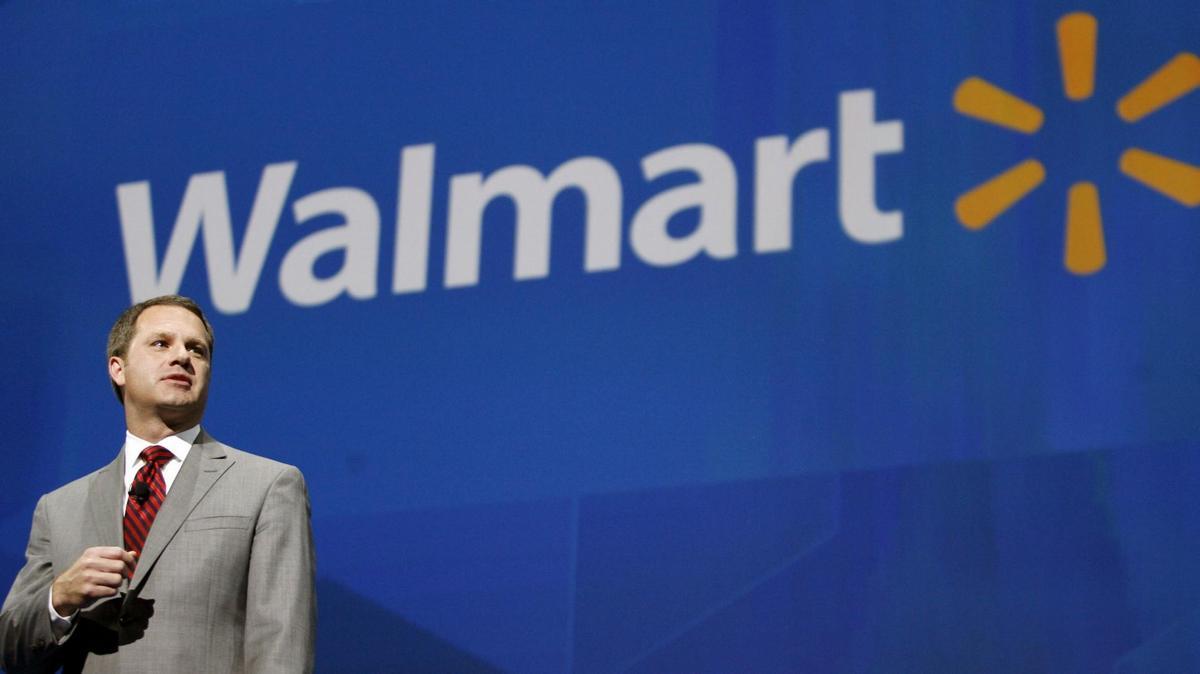
СEO Walmart: We Need People to Lean into the Future
McMillon talked with HBR about the ups and downs of Walmart’s journey, its $3 billion purchase of Jet.com, and how he plans to change the company.
For HBR, Doug McMillon described how he is going to modernize the company to withstand the onslaught of online retailers. RAU publishes an short version of the article.
For years, Walmart seemed to understand exactly what its customers wanted. It developed complicated consumer analytics and used that data, along with relentless pressure on suppliers, to become a retail powerhouse that sold practically everything at the lowest possible prices.
Then along came the internet. Suddenly upstart rivals figured out how to track and forecast like Walmart. And the rapid success of Amazon and other e-commerce pioneers called into question whether a brick-and-mortar giant, especially one with 4,600 stores in the United States alone, could survive, let alone thrive.
As Walmart’s sales growth began to stall, the board in 2014 tapped Doug McMillon to take over as CEO. The imperative was clear: Bring Walmart into the future without blowing the franchise.
McMillon, 50, has embraced the challenge. Boyish and soft-spoken, he is pushing hard for change while also showing a clear respect for tradition. McMillon is a company lifer whose first job was unloading trucks at a neighborhood Walmart in Tulsa, Oklahoma. He rose steadily through the ranks, eventually running Sam’s Club, the company’s warehouse retail chain, and then Walmart’s international operations. These days his task is nothing less than leading the transformation of America’s largest company.
McMillon sat down for an interview in his office at Walmart’s Bentonville headquarters, in the northwest corner of Arkansas. It’s the same office that legendary founder Sam Walton occupied as he built Walmart into what these days is a nearly $500 billion business.
— When you became CEO of Walmart, what was your top priority?
— Walmart is more than 50 years old, and it was built with a purpose. But the world is changing quickly. When I moved into this role, it seemed clear that the board wanted me to have the mindset that I might be in the job for a while. They said: “The company needs to go through quite a bit of change. So don’t just run it. Don’t just maintain it. Get it prepared for the future.” That’s what we’ve been trying to do.
—Does that primarily mean going digital?
— E-commerce and going digital are definitely near the top of our list. But there are other imperatives: Are we positioned right geographically in the 28 global markets we’re in? Culturally, do we have the behaviors we need to deal with the future? And what has to change in our brick-and-mortar environment?
— Are you certain that physical stores are part of your future?
— Our goal is to be able to serve our future customers. To do that, we need to build a strong and capable e-commerce business—but also to strengthen what we’re doing in stores. Customers want to save money and time and have the broadest assortment of items, and we think that by bringing e-commerce and digital capabilities together with the stores, we can do things that a pure e-commerce player can’t.
—Is it possible you’re adapting your strategy to conform to the reality that you already maintain thousands of stores? Or are you confident that integration is the best approach?
— The reality is that customers want everything. They want to go online to see hundreds of millions of items and to find anything they’re looking for. But many also want to have a delightful experience in a physical store environment.
—Walmart is all about low prices. But is the convenience of online shopping becoming more critical than price?
— Low prices at Walmart are a given. Customers almost take that for granted. But they also want to save time, and that goal is increasing in importance relative to just saving money. You can’t build a business today that’s successful purely on price. The old trade-off of service versus low prices no longer makes sense.
—Walmart was late getting into e-commerce. Why did it take so long? Was it simply that the old model was so profitable that there was no urgency to change?
— We wish we had been more aggressive early on, no doubt. In some ways we experienced what Clay Christensen calls the “innovator’s dilemma.”
We hired talent, invested, and just kind of meandered along rather than hammering down, being aggressive, and making it a must-win aspect of our business.
That’s partly because we had a bird in hand. We knew that if we continued to open Walmart Supercenters, they would do well. Traffic in the United States is still going up. But digital conversion for us has to be about more than just serving the customer on the front end. It’s about more than e-commerce. We need to introduce digitization across all our functions and jobs so that we can be faster and more efficient. There is still too much paper pushing in our business. Customers want everything. You can’t build a successful business purely on price.
—How do you ensure that the people leading your core business remain motivated as attention and resources go to the newer, digital operations?
The people who run the older parts of our business must also become digital. We can’t have some people live in yesterday while others live in tomorrow. And given the effects of inertia, we need people to lean into the future even more than other companies might. We’re trying to move large numbers of people to change their established habits.
— How do you communicate that urgency across the company?
— We’re in a constant educational process. We set goals, we meet face-to-face in groups and individually. We give people things to read, including HBR pieces. People learn in different ways. Some say they really get it when you show them a case study. For others, it’s more conceptual.
— Are you finding that some employees lack the skills and attributes to make this journey?
— Yes, it’s logical that as you lead change like this, you’ll get different responses. You’ll have some people at “hello,” but others will take more time or won’t want to change. We’ve seen some departures, and we’ll see more. But we have a lot of well-educated, bright people in the company, and I’m confident that as a group we’ll be able to move forward.
— Walmart faces competition from below on price and from above on quality. And then there’s Amazon, the giant in online retail. What does winning mean for you in this environment?
— We try to focus on the customer more than on the competition. Of course, we have competitors in our peripheral vision, and we try to learn from them. We’re trying to hire great talent in the digital area. We’ve made acquisitions, and I’m sure we’ll do more. We’re also more open to partnering than we were in the past. We don’t need to build everything on our own.
— Let’s talk more about Amazon. How does Walmart stack up against it?
— Let me try to answer that question by showing you a couple of things. When I first took this job, I gave this book, The Everything Store [Brad Stone’s in-depth look at Amazon], to all my officers. I told them to read it and understand it, and then we discussed it together in meetings.
And this book is a replica of the 1908 Sears, Roebuck catalog. Look at the assortment: They’ve got beds, plates, pianos, food. There’s a fireplace, a shotgun, and, what’s that, feathers? There are bridal hats. In other words, breadth of assortment existed in 1908. Back then people were getting deliveries over the newly established railroad system. And then this innovative company called Sears, Roebuck came up with the idea of setting up outlets and became a combined store-and-catalog business, focusing on assortment, value, and service. The stores were close to customers, who could get what they wanted immediately—and we know that humans like instant gratification.
— And you think Walmart’s version of a dual model can beat Amazon’s?
— As a retailer, we’ve had fun watching what Amazon has built. The site is really cool. It’s an innovative marketplace: Customers save time and get an assortment. So how do we continue what we’ve been doing yet also create these things ourselves? Our goal is to copy what we should copy, invent what we should invent, and end up winning by changing what we do and how we do it—without changing who we are. We’ve done a lot of introspection in the past few years, and we feel that our purpose, values, and culture are timeless. History shows that most retailers don’t survive disruptive change, but we’re confident that we can make it.
— How is the digital transformation going so far? What’s the biggest challenge?
— Speed. If you compare our e-commerce business with almost anybody else’s, you’d say it’s a pretty good business. In fiscal 2016, our global e-commerce sales increased about 12%, to $13.7 billion. But when you look at what the leader is doing, we’re far short of where we should be. And that’s just in e-commerce; there’s a lot of other digital conversion that needs to happen. We’re thinking in the right way, and we’re moving but not fast enough. I’m frustrated by that.
— What’s the ultimate value of the Jet.com purchase? Why did you pay $3 billion for Jet instead of building that kind of platform internally?
— We were making progress with Walmart.com without Jet, but it just wasn’t enough. The transparent customer experience that [CEO] Marc Lore and the rest of Jet had built was attractive. Jet’s “smart basket” experience lets customers be actively involved in what price they pay, depending on how they buy things—with a debit card instead of a credit card, giving up return privileges, and so on. When we saw Jet, we saw a strong tech platform and a team that was culturally aligned with how we think about the world.
— Is the goal to merge the platforms and brands?
— We’ll share a lot of back-end stuff and eventually have a common tech platform and fulfillment business. But we’ll operate two separate brands with two separate identities.
— Why keep the brands separate?
— Jet has appealed to more urban, Millennial, and higher-income customers than Walmart has. And it has relationships with some brands that might not want to sell through Walmart.
— Although Walmart recently raised wages, the company still faces reputational issues. How are you dealing with that?
We start with reality and try to focus on what we can do to make Walmart an even better company. And after that, we’ll talk about reputation. I’m really proud of our work in environmental and social sustainability—including the commitments we’re making on greenhouse gas. If the world knew what we’ve done for the past 10 years and what we’re doing to make things better holistically, I think our reputation would be dramatically better.
— How do you respond to the lingering charges that Walmart mistreats its workers?
— My first job with Walmart was unloading trucks in a warehouse. Then I worked as an assistant manager in a store, and I was lucky enough to get into our buyer-training program. I loved merchandising and had a career path that led me through Sam’s Club and Walmart International. I’ve had more opportunities in this company than I could have dreamed of. There are hundreds of thousands of people like me who have had that experience. But we haven’t been perfect. We’re trying some fairly dramatic changes to make the ladder of opportunity more real for everybody and to really create the meritocracy that we’ve aspired to have all along.
— How do you do that?
— You have to set the bottom rung, that place where workers get started, at the right level so that a college kid or someone who wants to build a career has an entry point. And then you have to space the rungs appropriately, with the right kind of support, so that people can climb as high as they want to go. We have invested in wages, in training, and elsewhere to create a system that can help you go as far as your capability and work ethic will take you.
— Are you looking for a different kind of employee these days?
— The future of retail will include more technology. We already have handheld units on the floor, and today more data is available for people to use. We need store associates and managers who can operate handheld devices, do analysis, ask questions, receive data, and basically run a store within a store. Imagine you’re trying to run a great toy department within a Walmart store. Your success depends on forecasting. How do you think about the weather? What’s going on in the community? What other variables do you look at? To attract the right kind of talent, we need to make some investments. And that will result in better stores.
— Let’s talk about your role as CEO. What is it that you most need to focus on?
— I’ve worked for the company for a long time, so it’s important for me to develop an outside-in view. If I were married to the things we’ve always done and, consciously or subconsciously, tried to protect them too much, I’d hold the company back. So I’ve tried to spend a lot of time outside it and to learn from other CEOs. I still visit our stores and clubs—don’t get me wrong. But I go to Silicon Valley frequently, and I meet with people from start-ups as well as larger companies that in some cases we do business with. I ask questions, trying to learn what it means to be digital. I also travel the world to learn what it means to be global. And then I try to use all of that to create the right strategy and the right level of paranoia to speed up change. I’m trying to leverage the collective perspective, wisdom, and experience of everyone I’ve been talking to and to lead Walmart as if it were a brand-new company on day one.
— How do you know if you’re on the right path?
— Well, first, I’m not doing this all by myself. But sure, there’s a risk associated with change. It might not work. But I would rather have us take a shot and reach for the future, so we can be here in 50 years, than just make the most out of the old system.
— What’s your advice for other executives whose companies are going through disruptive change?
— Act like a student and surround yourself with people who “get it.” Digital natives need to be part of your management team as well as your board. Walmart’s board has included people like [Instagram cofounder and CEO] Kevin Systrom and [Yahoo CEO] Marissa Mayer.
— How do you keep learning?
— I’m a curious person. You’re talking to a guy who was one of the first to have a Newton and a PalmPilot. I’ve got a Google Home in my kitchen, and I’m playing around with AI. I like learning new things, and so do a lot of Walmart’s leaders, and that gives us a shot.
— Is Walmart experimenting with things like speech recognition platforms, augmented reality, and virtual reality?
— We have some work going on, but we’re behind in those areas. Virtual reality is going to happen. Machine learning is happening as we speak. We can’t afford to get too far behind on those things. In some of those areas we need to build our own capabilities. And in others we can partner.
— Do you ever feel that the pace of change is out of control?
— Once upon a time a company like ours might have made big strategic choices on an annual or quarterly cycle. Today strategy is daily. I speak from time to time with [former Procter & Gamble CEO] A.G. Lafley, and we had a chuckle not long ago over the idea that strategy is hourly now. As a CEO, you need to have a framework in your mind, but strategic thinking is much more fluid.
— That sounds challenging.
— It can be frustrating for your team. You don’t want to create an environment where they feel like they’re trying to hit a moving target every day. While you’re learning, you have to also be thoughtful about what you share with everyone else and how deliberate you are with the masses of people that work in your company. But, like it or not, strategy is happening on a much faster cycle time.
Once, companies made big strategic choices annually. Today strategy is daily.
— Can you give an example of a quick strategic shift you’ve had to make?
— One example is our online grocery business. If you look at e-commerce penetration by category, fresh food has tended to lag. But we have a fresh-food supply chain, and we have stores near the vast majority of America. So we want to use that advantage and combine it with mobile, which means people can order groceries on their phones and pick up their order when they want in the store parking lot. We also have a test going on with Uber, Lyft, and others to handle “last mile” delivery. These are things that we launched very quickly.
— Let’s shift to global markets. Is Walmart’s future growth likely to come primarily from the United States or from overseas?
— We used to have targets for growing the share of international revenue. But we don’t talk much about that these days because the United States still presents a growth opportunity. That said, we’re going to get growth from a lot of places. China is in a league of its own. India is important to figure out. Sub-Saharan Africa is exciting to us. We have businesses in Canada and the UK that remind us of the United States, with strong, capable teams. And then there’s Walmex, which covers Mexico and five Central American countries. That’s a large and important business for us.
— How would you describe the balance between taking advantage of global scale and the need to differentiate each local market?
— Our philosophy is to lean local first and to look for synergies and the benefits of scale second. Speed trumps size. Our markets, I believe without exception, all sell the majority of their merchandise from local suppliers. With fresh food and even canned merchandise, you don’t want to move things very far. With general merchandise and apparel, there is more of a global aspect. And in those areas we work together.
— Do you worry, given what’s happening around the world politically, that we may be entering a phase of deglobalization?
— The world is a global marketplace. You could choose to participate less, but other countries are still going to trade with each other. And the math says that over time trade is good for the United States—in terms of total GDP growth, in terms of saving people money, in terms of people living the life they want to live. We’re in favor of trade, but we realize that it has had a negative impact on isolated pockets.
— What’s the role of the private sector in helping people cope with global change?
— We haven’t done everything that we can as a country—and I’m talking about both the public and private sector—to prepare people to transition into the jobs of today and tomorrow. The world is not going to stop automating, so we have to upgrade our jobs and train people to be able to do them. Because if you have a job, you have everything. You have an opportunity to own a home, to make sure your kids get educated. All these things are related to each other.
— If the United States were to slip into a trade war with China, what would that mean for Walmart?
— There are many dimensions to that issue. Do Americans want U.S. manufacturing to grow and be successful? Yes. Do we want to export more? Yes. Do we also want to save money on, say, bicycles? Yes. So these tensions need to be worked out by government leaders as well as the private sector. At Walmart we engage in these discussions and try to make sure that people are informed.
— What will the Walmart experience look like 10 years from now?
— It will be more seamless, it will be underpinned by both digital and physical capabilities, and it will have sustainability components woven in. Our AI and logistics capability will make sure you have those items you always want in your pantry or refrigerator. For products that you want to explore, both digitally and physically, we’ll create environments where you can find something you might not have tried before.
— What is your vision for sustainability?
— Our hypothesis is that transparency is only going to increase, and customers will want companies and brands to make good decisions about how products are produced and sourced. That means that when you shop with us you know that you’re having a positive impact, socially and environmentally, on the world. By educating and informing our own people, we try to ensure that social and environmental sustainability thinking permeates the entire system.
— Do customers care enough about that? Do these issues rise to the level of price and convenience?
— Everything is a pecking order. If you have to pick between oxygen and water, you’ll take oxygen first. But do you also want water? You bet. Would you also like to eat? Uh-huh. Customers are similar. Do they want low prices? Yes. But they also expect us to make decisions that are good for the planet and good for the people that make the products in our supply chain. They want all of that. And the companies that provide it better than others will win.
— Sustainability doesn’t seem to be a priority for the new U.S. administration. Is that a concern for you?
— Sustainability is a part of who we are. It’s in our culture now. We don’t want to take it out and probably couldn’t. Putting in LED lighting has turned out to have a better ROI than the alternative, and the next new technology probably will, too. It might be that the payback period is longer, and you have to have the right time horizon in mind. But we began our sustainability efforts under a Republican administration, carried on with them during the past eight years, and are now accelerating them further. It’s good business, and our customers want us to do these things, regardless of which way the political winds may blow.
— Are your shareholders patient with your efforts to pursue initiatives with longer-term payouts?
— We have the benefit of having a family own half the company. In some cases that makes it easier for us to take a balanced approach. The board and the Walton family care about short-term results, but they also care about long-term results. More than anything else, they want Walmart to be a well-run, quality business that does good in the world. My management team and I are in a situation where we can balance short- and long-term thinking. I’m thankful for that.
Read also –
The Ukrainian e-commerce under a microscope: a comparative analysis of country online-stores
Read also

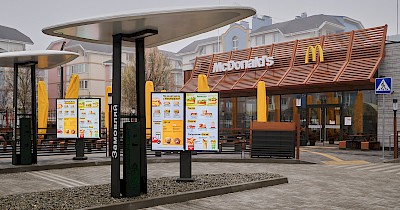
McDonald’s відкрив 10-й ресторан у 2025 році — у селі Гатне біля Києва (+фото)
